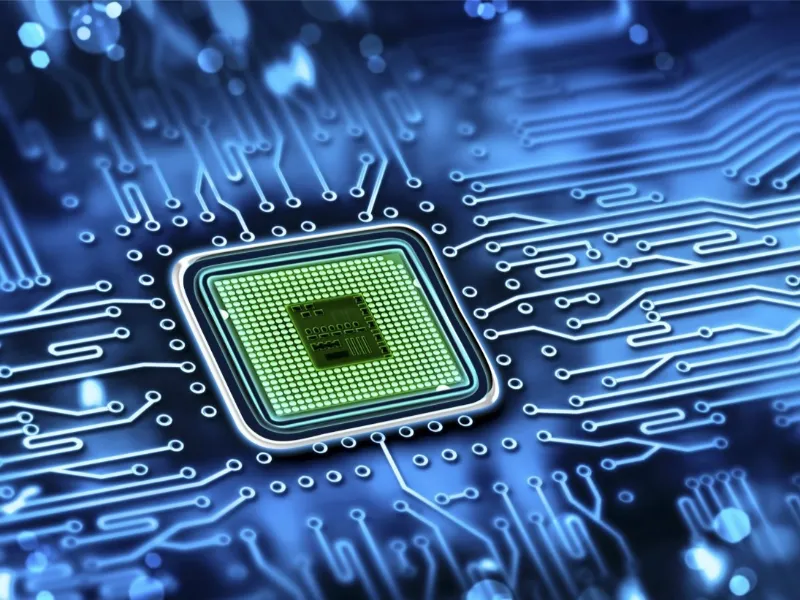- A microcontroller is essentially a small computer on a single chip that is used to manage specific tasks in an embedded system.
- Microcontrollers are ideal for battery-powered consumer electronics such as smartphones, smartwatches, and other wearables.
Texas Instruments engineers Gary Boone and Michael Cochran created the first microcontroller in 1971. Today, dozens of different microcontroller manufacturers – such as Intel, NXP, and Arm – offer hundreds of varieties, from generic options for hobbyists and hobbyists to professional technicians and highly specialised solutions for all industries.
What is a microcontroller
A microcontroller is essentially a small computer on a single chip. It is designed to manage specific tasks in embedded systems without the need for a complex operating system.
These compact integrated circuits contain a processor core, random access memory (RAM), and electrically erasable programmable read-only memory for storing custom programs that run on the microcontroller, even when the unit is disconnected from power.
Unlike general-purpose microprocessors, microcontrollers integrate processing, memory, and input/output (I/O) peripherals, including timers, counters, and analog-to-digital converters (ADCs), into a single, efficient and economical unit. By combining multiple components into a single system, microcontrollers are well suited for applications that require real-time signal processing, such as controlling motors and servers and interfaces with various types of sensors and communications.
Also read: What is an embedded system and what are the applications?
Also read: Sony’s Astro Bot DualSense controller goes up for pre-order
Components of a microcontroller
1. Central processing unit (CPU): Commonly known as the “brain” of a computer, it is the core component responsible for executing instructions and controlling operations.
2. Memory: Microcontrollers contain volatile memory (RAM) and non-volatile flash memory. RAM differs from program memory in that RAM stores temporary data that can be lost when the system is powered off, while non-volatile flash is used to store the microcontroller’s programming instruction set firmware.
3. Peripherals: Depending on the intended application, the microcontroller may contain various auxiliary components such as input/output (I/O) interfaces, including timers, counters, analog-to-digital (ADC) and digital-to-analog (DAC) signal converters (ADCs) and communication protocols (UART, SPI, I2C). Auxiliary devices may also include components such as LCD screens, Ethernet connection ports, or interfaces for such modules.
Microcontrollers are ideal for battery-powered consumer electronics such as smartphones, smartwatches, and other wearables because of their lightweight, small size, and relatively low power consumption.
Types of microcontrollers
1. 8-bit microcontrollers: The most basic type of microcontroller, featuring limited processing and memory and typically used in small appliances like toys and remote controls.
2. 16-bit microcontrollers: Twice as capable as 8-bit models, 16-bit microcontrollers are used for more complex applications, including medical devices, automotive systems and industrial control systems.
3. 32-bit microcontrollers: The most powerful and feature-rich type of microcontrollers, these are used for demanding applications, such as gaming consoles, entertainment devices and high-end industrial automation.
4. Reduced instruction set computer (RISC) microcontrollers: RISC microcontrollers incorporate a design architecture that simplifies and improves operations by executing fewer compute instructions faster than other methodologies, such as the complex instruction set computer (CISC) architecture.
5. ARM microcontrollers: Formerly an acronym for Advanced RISC Machines, these types of microcontrollers incorporate the ARM architecture, including the modern ARM Cortex subset, that bolsters performance and reliability. ARM microcontrollers are widely used in mobile devices, automotive systems and industrial control systems.
6. FPGA-based microcontrollers: Commonly used in applications necessitating digital signal processing, video processing and high-speed networking, these microcontrollers use field-programmable gate arrays (FPGAs), which can be configured and reconfigured on the hardware level, to achieve highly versatile and customisable processing results.

